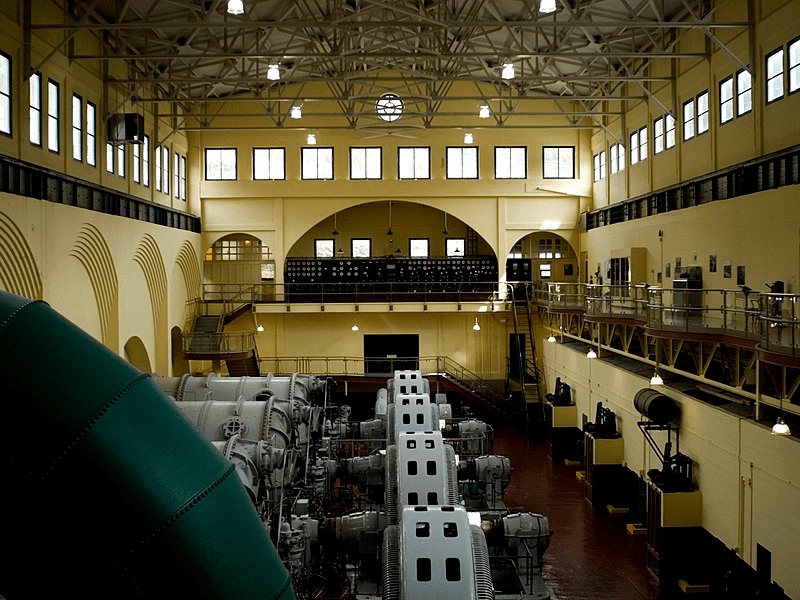Something that we haven't mentioned is the action of Central Load dispatch, load control panels or plant operators.
As the load on a system is increasing, one of the above authorities will call for more generation to be added on-line.
It is generally inefficient to run all of the generating sets regardless of the load.
The sets may be run at 80% or 90% of rated load.
As the load on the system increases, more sets are added to keep the load on the individual sets near the target load.
As the system load is dropping, sets are taken off-line.
In our small, all droop system, the operators recorded the parameters and manually trimmed the frequency every 15 minutes.
In a large system with a swing set, the load on the swing set is monitored to keep the swing set at a power level that allows for adjustments for either positive or negative load swings.
An exception:
95 Years ago this power house was British Columbia's largest source of hydro-electric power.
The old Stave Falls Power House
In the 70's this power house was under manual control.
The generators ran at either 10% output to keep the sets warm and turning or at 90% output when the power was needed.
I lived about 2 miles away at the time and dropped in one day.
The one operator on duty was happy to have a visitor and give me a tour of the station.
The plant was running at 10% output.
While I was there, the phone rang.
It was central dispatch requesting 90% output.
The operator started to advance the set-point of a droop governor to pick up load.
The operator would stop from time to time and manually adjust the field current to bring the PF up.
He did this about three times before he reached 90% output.
Then he repeated the process for the other four generators.
When the afternoon peak was past, the phone would ring and the sets would go back down to 10%.
Frequency control:
A load change is shared by all the generators in the system and has little effect on the frequency.
The very small drop in frequency is detected by the swing set which increases its output to equal the increased load and corrects the frequency back to 60 Hz.
At 5% droop;
If 100% output is required, the governors of the sets will be set to 63 Hz.
If 50% output is required, the governors will be set to 61.5 Hz. (60 Hz + (50% x 3 Hz))
If 10% output is required, the governors will be set to 60.3 Hz. (60 Hz + (10% x 3 Hz))
Bill
--------------------
Ohm's law
Not just a good idea;
It's the LAW!
